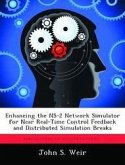This monograph discusses how the U.S. Army and Army tactical military intelligence branch could utilize a distributed analysis and control element (ACE) to support the commander's operational picture (COP) and situational understanding. Recent exercises to include the Experimental Force rotation at the National Training Center (EXFOR), the Division Advanced Warfighting Exercise (DAWE), and Division Capstone Exercises Phase I and II (DCX I and II) have incorporated portions of a distributed ACE. The distributed ACE could ultimately provide the tactical commander a threat picture that supports an integrated COP, and situational understanding. This would provide the commander an enhanced capability to make more timely and accurate decisions on the battlefield. The study focuses on three areas: (1) The advancing technology to support the creation of a distributive ACE, (2) The need to update military intelligence doctrine, (3) The training required to support a distributed ACE. This monograph first examines the theoretical underpinnings behind the potential development of a distributed ACE. The theory chapter discusses the works of GEN (ret) Gordon R. Sullivan, the research group led by DR. David S. Alberts, and Michael O'Hanlon. Next, The study examines four recent digitized exercises at the Army tactical level. These exercises include the EXFOR rotation, DAWE, and DCX I and II. The study then analyzes the theory chapter and the exercise chapter in regards to the use of a distributed ACE. This monograph reaches three conclusions. First, the technology required to support a functioning distributed ACE is still immature and requires further development. Numerous processors and sensors are not fully integrated technologically to satisfy the support to the COP. Second, the doctrine to support the distributed ACE is nonexistent, and recent exercises reveal weak tactics, techniques, and procedures on distributed intelligence operations at the tactical level. Lastly, the tra








